The French ironclad Friedland was originally an iron-hulled version of the Océan-class armoured frigates but she was much altered in her construction as a central battery ship. Named after the French victory at Friedland in 1807, she spent her career assigned to the Mediterranean Squadron, supporting the French occupation of Tunisia in 1881. She was then BU in 1902.
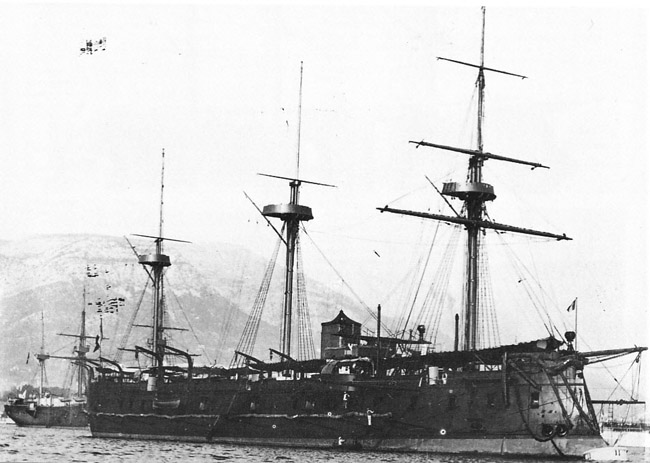
Design of Friedland (1871-73)
Hull & general appearance
Friedland was a central battery ironcla, heavily modified during contruction, as a central battery ship: All her armament was modified for fewer, larger guns all concentrated amidships. She was also was fitted with a plough-shaped ram. She measured 101.1 meters (331 ft 8 in) overall for a beam of 17.7 meters (58 ft 1 in) as completed, and had a maximum draft of 8.6 meters (28 ft 3 in) for a displacement of 8,540 metric tons (8,410 long tons). This was 750 metric tons (740 long tons) more than than the Ocean-class ironclads. The crew namounted to 750 officers and men.
He hull was subdivided by five 100-millimetre or 4 inches watertight bulkheads making six separated compartments, going from the keel up to the weather deck, so each only could be reached from the main deck. She lacked however a double bottom. Her metacentric height was low at just 3 feet (0.9 m).
Her Armor scheme was the following:
A main wrought iron belt of 220 mm (8.7 in)
A main battery protection of 160 mm (6.3 in)
Bulkheads that were 100 mm (3.9 in) thick.
The complete 220-millimeter (8.7 in) wrought iron waterline belt had sides and transverse bulkheads of the battery proyected 160 millimeters (6.3 in) of wrought iron. The barbettes on top for stability reasons remained unarmoured. This dangerously exposed their crews. Later light gun shields were installed.
Powerlant
Friedland had a single Indret 3-cylinder horizontal return connecting rod compound steam engine (HRCR) which drove her single propeller. Steam came from eight oval boilers. On sea trials, her powerplant showed capable of producing some 4,428 indicated horsepower (3,302 kW). Friedland managed to reach 13.3 knots (24.6 km/h; 15.3 mph), which was average for the time. She carried 630 metric tons (620 long tons) of coal which enabled her a range of approximatively 2,666 nautical miles (4,937 km; 3,068 mi) at 10 knots (19 km/h; 12 mph). Of course she was rigged with three masts initially with 2001 m² sail area. It was then turneed into a simpler barque-rigging. After her reconstruction later, she only had fore-and-aft mast, since her mainmast was removed altogether.
Armament
She had the following:
-Two 274 mm Modèle 1870 guns in barbettes on the upper deck, one at each forward corner of the battery
-Six 274 mm Modèle 1870 guns on the battery deck, below the barbettes.
-Eight 138 mm M1870 guns on the upper deck, fore and aft of the barbettes, and battery deck.
Main: Seven 27 cm (10.6 in)

Canon 27 cm Model 1875, modified (Photo by Neurdein).
The 18-calibre 274-millimeter (10.8 in) had the following specs:
-Gun weight 22.84 long tons (23.21 t).
-Shell AP 476.2-pound (216.0 kg)
-Muzzle velocity 1,424 ft/s (434 m/s)
-Penetrating 14.3 inches (360 mm) of wrought iron armour.
The Canon de 27cm had a cast jacket, with A type steel tube. The barrel weight was 30,200 kg, 8 m 266 long for an exact caliber of 274,4 mm. It used a Console and spring latch closure for the breech. The carriage was the Modèle 1888 with front pivot, weighting 46 tonnes. It allowed a depression/elevation of -6°/+25°, and for the battery guns on rails, 180° arc of fire. Max range was 18,500 meters (20,230 yards). Muzzle velocity was 590 m/s max (645 yds/s) with a shell of 216 to 350 kg (476 – 771 Ibs).
The hull was not recessed so the battery deck gun were limited in arch but the ones on the upper barbettes sponsoned out could fire fore and aft.
Secondary: Six 13,8 cm (5.4 in)
The Model 1870 saw a very long service in the French Navy. Navweaps has infos on the 138.6 mm model 1884 but not before. The last 138.6mm/50 was the model 1929 found on several large destroyers. The M1870 was about the same mechanically as the 270 mm gun.
The 138-millimeter (5.4 in), 21 calibres has the following specs:
Weight: 2.63 long tons (2.67 t).
Shell: 61.7-pound (28.0 kg) HE shell, muzzle velocity of 1,529 ft/s (466 m/s).
Can fire also solid shot.
Later: 47/37 mm Hotchkiss (6-3 pdr)
Later in her career, Friedland received twenty-two 37 mm (1.5 in) Hotchkiss 5-barrel revolving guns.
They fired a 500 g (1.1 lb) shell at a muzzle velocity of about 610 m/s (2,000 ft/s) at a range of about 3,200 meters (3,500 yd) for a rate of fire of about 30 rounds per minute.
TTs: 2-4 356 mm tubes (14 in)
In 1884, two above-water 356-millimeter (14.0 in) torpedo tubes were added and two more were added in 1891.
⚙ Friedland specifications as built |
|
| Dimensions | 101.1 x 17.7 x 8.6 m (331 ft 8 in x 58 ft 1 in x 28 ft 3 in) |
| Displacement | 8,540 metric tons (8,410 long tons) |
| Propulsion | 1 shaft HRCR compound engine, 8 oval boilers 4,428 ihp (3,302 kW) |
| Speed | 13 knots (24 km/h; 15 mph) |
| Range | 2,660 nm (4,930 km; 3,060 mi) at 10 knots (19 km/h; 12 mph) |
| Armament | 8× 274 mm (10.8 in), 8× 138 mm (5.4 in) guns |
| Protection | Belt 220 mm (8.7 in), Battery 160 mm (6.3 in), Bulkheads 100 mm (3.9 in) |
| Crew | 688 |
Friedland’s career (1877-1898)
Friedland was laid down at Lorient in January 1865, launched on 15 October 1873 but after a government change, there were argument about her basic design, and it was decided to hald construction and redesign the ironclad as a sponsons barbette, central battery type. It was done while budgetary constrains inherited from the Franco-Prussian War of 1870–71. French dockyards lacked novel working practices and seems to have missed the industrial age train. Methods od construction were just innefficient and antiquated, infrastructure mediocre. Friedland was completed at last on 20 June 1877, but not before starting her sea trials by May 1875. So from 1865 to 1877, twelve years went by and naval technology went ahead.
Once operational after workingg up and some exercises, Friedland joined the Mediterranean Squadron the next year in 1878. She had an uneventful career until she joined the expeditionary force sent to North Africa. She was part of the force that bombarded the Tunisian port of Sfax on 6–16 July 1881. This was the prelude of the French occupation of Tunisia.
Nothing much happened in her career, punctuated by yearly training cruises with the Mediterranean Squadron. She was also modernized a bit (new Hotchkiss guns and torpedo tubes installed) in the 1880s but her career was limited by her general design, dating back to the 1860s, so after only ten years service, she was deemed a burden to the French Navy and reduced to reserve in 1887.
In between she kept her two 275 mm guns in barbette turret and six 275 mm guns in her central redoubt) as well as her eight 138 mm guns but gained after 1878 eight Hotchkiss revolver guns.
After 1884 two torpedo tubes were mounted, and in 1891 she gained two more, for four total.
She was mothballed, never reactivated in 1888-92 and ultimately decommissioned in 1893. The same year however she was briefly recommissioned for a few more years as colonial tension rose betwen great powers. Ultimately she was deemed uneconomical to maintain fully commissioned and she was paid off in 1898, the same year the Fachoda incident took place. She was ultimately condemned in 1902. Meawnhing she was completel disarmed, stripped down and then stricken, sold for BU.

The Surrender of Dulcigno in 1880, the last of the International Squadron, convened by the Treaty of Berlin: The Graphic 1880
For the anecdote, French writer Pierre Loti served on board from April 1, 1880 to February 25, 1881 and descibe the time Friedland was part of the international fleet mobilized by the European powers in the Adriatic, to conterbalance Turkey’s play in the region. Pierre Loti wrote “Pasquala Ivanovitch and Other Montenegrin Pages” in an autobiographical novel but renamed Friedland “the Bold”.
Read More/Src
Books
de Balincourt, Captain; Vincent-Bréchignac, Captain (1975). “The French Navy of Yesterday: Ironclad Frigates”. F.P.D.S. Newsletter. III (4): 26–29. OCLC 41554533.
Campbell, N. J. M. (1979). “France”. In Chesneau, Roger & Kolesnik, Eugene M. (eds.). Conway’s All the World’s Fighting Ships 1860–1905. Greenwich: Conway Maritime Press. pp. 283–333. ISBN 0-8317-0302-4.
Roberts, Stephen S. (2021). French Warships in the Age of Steam 1859–1914: Design, Construction, Careers and Fates. Barnsley, UK: Seaforth Publishing. ISBN 978-1-5267-4533-0.
Ropp, Theodore (1987). The Development of a Modern Navy: French Naval Policy 1871–1904. Annapolis, Maryland: Naval Institute Press. ISBN 0-87021-141-2.
Silverstone, Paul H. (1984). Directory of the World’s Capital Ships. New York: Hippocrene Books. ISBN 0-88254-979-0.
Wilson, H. W. (1896). Ironclads in Action: A Sketch of Naval Warfare From 1855 to 1895. Vol. 2. Boston, Massachusetts: Little, Brown.
Links
fr.wikipedia.org Friedland
en.wikipedia.org French ironclad Friedland
on archive.wikiwix.com/dossiersmarine.free.fr
on archive.wikiwix.com/ Fjose.chapalain.free.fr

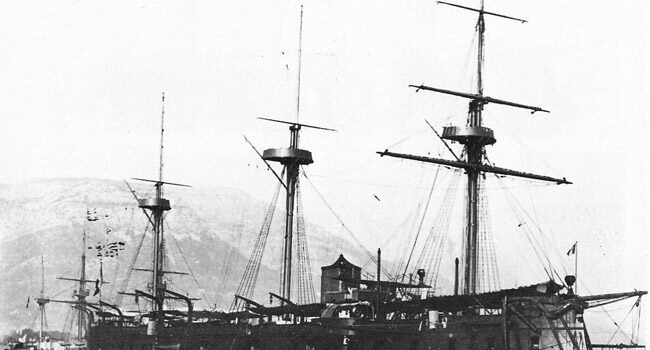

 Latest Facebook Entry -
Latest Facebook Entry -  X(Tweeter) Naval Encyclopedia's deck archive
X(Tweeter) Naval Encyclopedia's deck archive Instagram (@navalencyc)
Instagram (@navalencyc)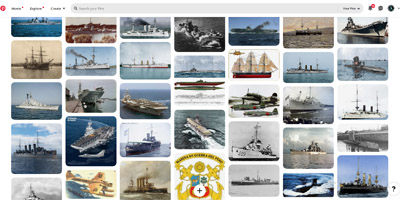


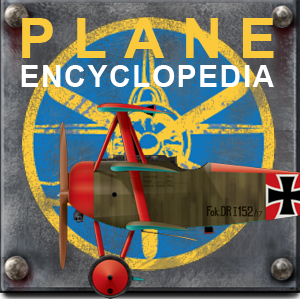
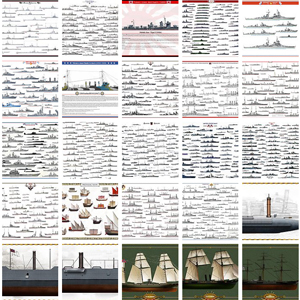
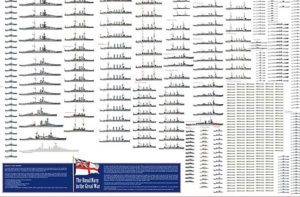
 French Navy
French Navy Royal Navy
Royal Navy Russian Navy
Russian Navy Armada Espanola
Armada Espanola Austrian Navy
Austrian Navy K.u.K. Kriegsmarine
K.u.K. Kriegsmarine Dansk Marine
Dansk Marine Nautiko Hellenon
Nautiko Hellenon Koninklije Marine 1870
Koninklije Marine 1870 Marinha do Brasil
Marinha do Brasil Osmanlı Donanması
Osmanlı Donanması Marina Do Peru
Marina Do Peru Marinha do Portugal
Marinha do Portugal Regia Marina 1870
Regia Marina 1870 Nihhon Kaigun 1870
Nihhon Kaigun 1870 Preußische Marine 1870
Preußische Marine 1870 Russkiy Flot 1870
Russkiy Flot 1870 Svenska marinen
Svenska marinen Søværnet
Søværnet Union Navy
Union Navy Confederate Navy
Confederate Navy Armada de Argentina
Armada de Argentina Imperial Chinese Navy
Imperial Chinese Navy Marinha do Portugal
Marinha do Portugal Mexico
Mexico Kaiserliche Marine
Kaiserliche Marine 1898 US Navy
1898 US Navy Sovietskiy Flot
Sovietskiy Flot Royal Canadian Navy
Royal Canadian Navy Royal Australian Navy
Royal Australian Navy RNZN Fleet
RNZN Fleet Chinese Navy 1937
Chinese Navy 1937 Kriegsmarine
Kriegsmarine Chilean Navy
Chilean Navy Danish Navy
Danish Navy Finnish Navy
Finnish Navy Hellenic Navy
Hellenic Navy Polish Navy
Polish Navy Romanian Navy
Romanian Navy Turkish Navy
Turkish Navy Royal Yugoslav Navy
Royal Yugoslav Navy Royal Thai Navy
Royal Thai Navy Minor Navies
Minor Navies Albania
Albania Austria
Austria Belgium
Belgium Columbia
Columbia Costa Rica
Costa Rica Cuba
Cuba Czechoslovakia
Czechoslovakia Dominican Republic
Dominican Republic Haiti
Haiti Hungary
Hungary Honduras
Honduras Estonia
Estonia Iceland
Iceland Eire
Eire Equador
Equador Iran
Iran Iraq
Iraq Latvia
Latvia Liberia
Liberia Lithuania
Lithuania Mandchukuo
Mandchukuo Morocco
Morocco Nicaragua
Nicaragua Persia
Persia San Salvador
San Salvador Sarawak
Sarawak Uruguay
Uruguay Venezuela
Venezuela Zanzibar
Zanzibar Warsaw Pact Navies
Warsaw Pact Navies Bulgaria
Bulgaria Hungary
Hungary

 Bundesmarine
Bundesmarine Dutch Navy
Dutch Navy Hellenic Navy
Hellenic Navy Marina Militare
Marina Militare Yugoslav Navy
Yugoslav Navy Chinese Navy
Chinese Navy Indian Navy
Indian Navy Indonesian Navy
Indonesian Navy JMSDF
JMSDF North Korean Navy
North Korean Navy Pakistani Navy
Pakistani Navy Philippines Navy
Philippines Navy ROKN
ROKN Rep. of Singapore Navy
Rep. of Singapore Navy Taiwanese Navy
Taiwanese Navy IDF Navy
IDF Navy Saudi Navy
Saudi Navy Royal New Zealand Navy
Royal New Zealand Navy Egyptian Navy
Egyptian Navy South African Navy
South African Navy






























 Ukrainian Navy
Ukrainian Navy dbodesign
dbodesign